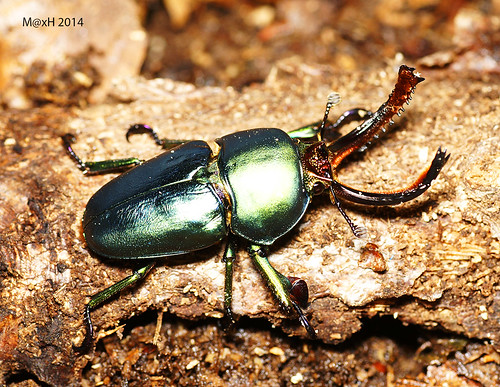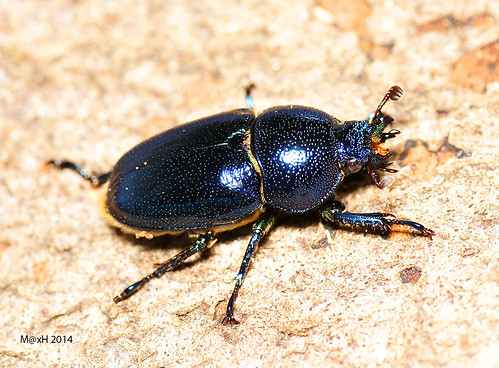Some time ago I purchased 3 late L3 larvae of Dynastes granti as an impulsive buy:). One larvae died in a few days and the other two successfully molted into the pupae after the month or so. I did not check their sex initially, so was a bit disappointed as they both turned out to be females. By the time they eclosed into adults, it was winter here in the UK and purely out of pity I purchased the male from Asia for something like 5 times its normal "seasonal" price. Luckily, we had a few relatively warm days here, during which he arrived safely. Here is the brief breeding report.
Setup and adults: A 40 litre plastic box filled with garden soil/peat/rotten oak wood and leaves mixture. Wood and leaves were mulched well into small particles and mixed with soil (garden soil/peat mixture), with 1:9 ratio. Bottom 15 cm layer was pressed firmly. Top of the soil was covered with small logs, sticks and leaves. I used my beetle jelly recipe (http://beetlesaspets.blogspot.co.uk/2013/11/jelly-for-tropical-beetles-at-home.html ) and ripe banana sprinkled with diluted honey for adults, which they loved and consumed lots of it. The temperature was 25C day and night. The box had only a few small holes, so the humidity in the container was high all the time. Once the females became active they started to come out and feed. The male was guarding food and and stayed close to the feeder all the time.


Eggs: I made the first dig after about 8 weeks when the females became active and started feeding. I dug up 50 eggs. The majority of the eggs were deposited very close to the bottom of the container, some of them were literally at the plastic bottom of the container. I rearranged the soil in the box and let the beetles into the container again.
After another 6 weeks when the male died and the food was not touched for a several days I made another dig and discovered that both females were dead and removed another 38 eggs from the soil. I was pretty satisfied with my results obtaining 88 eggs from two females. Interestingly, it may take ages for eggs of dynastes granti to hatch; first eggs started to hatch after about 8 weeks, while some hatched only after 6-8 MONTHS!!! Some of my larvae were solid L3, when the late eggs just hatched.
 Larvae: The larvae of the Western Hercules beetle turned out to be pretty hardy, similarly to the Eastern Hercules beetle (dynastes tityus) larvae. I tried both oak rotten wood and decayed oak leaves substrates and they were doing just fine. Moreover, I even switched the substrate during the development of the small group of larvae, and observed that it did not affect their development drastically. I also had very low die out percentage of the larvae; may be just one or two out of the whole lot.
Larvae: The larvae of the Western Hercules beetle turned out to be pretty hardy, similarly to the Eastern Hercules beetle (dynastes tityus) larvae. I tried both oak rotten wood and decayed oak leaves substrates and they were doing just fine. Moreover, I even switched the substrate during the development of the small group of larvae, and observed that it did not affect their development drastically. I also had very low die out percentage of the larvae; may be just one or two out of the whole lot.
I found the breeding and rearing of these species quite easy. The only pity is that such beautiful beetles do not live long as adults, just about 3-5 months.













